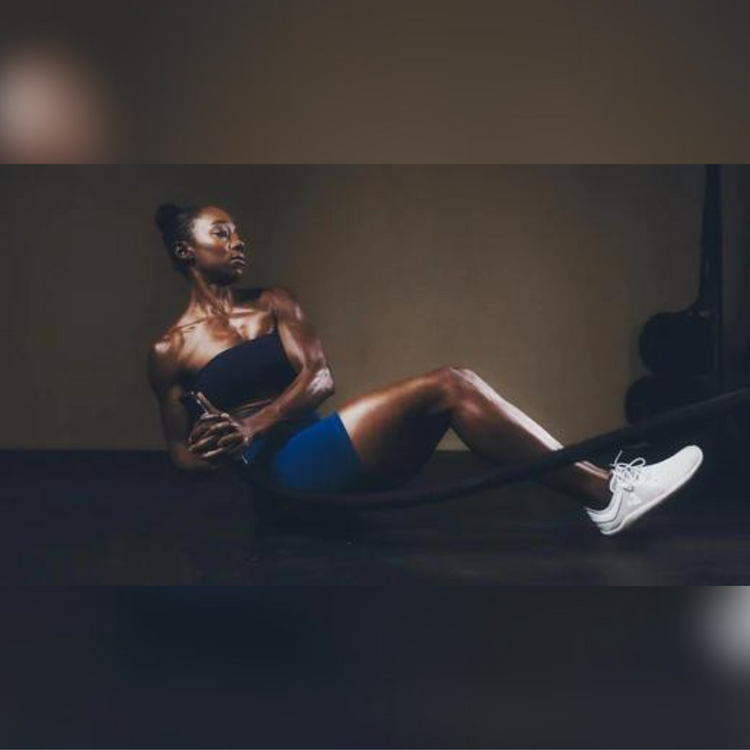7 Tips For a Well-Trained Body

My name is Adrianne Nina, I’m a fitness and wellness coach based in Los Angeles, CA. I created the brand WELL TRAINED, as a way to share and help others achieve a healthy body and lifestyle. Overall fitness is achieved through a combination of training elements. These are the seven principles for one to make their body well trained.
- Breathwork
- Ground Movement
- Cold Exposure
- Mindfulness (Body Awareness)
- Nutrition
- Resistance/Strength Training
- Cardio/Aerobic Training
Breathwork
Breathing is the most essential act of all living organisms, but it’s usually the area which is the least focused. Our bodies are built for us to breathe innately without having to put much thought into the process. Overtime, without the proper attention, our breathing patterns can become dysfunctional and have adverse effects on our well-being. The ideal breathing pattern for a body in its neutral state is slow, quiet nasal inhale and exhale. This is the optimal way for getting oxygen flow throughout the body as well as channeling a more relaxed state of mind.
Ground Movement
Movement that is based on the hands and feet is one of the best ways to reconnect with our bodies. It may feel uncomfortable initially, as most people haven’t crawled since they were infants. Overtime, with practice and patience, it helps one to build strength in a way that they aren’t able to on their two feet alone, while improving joint stability and mobility. Ground movement can be used as an active warm-up or resistance training.
Cold Exposure
I’m sure you’ve heard the phrase, “You have to get uncomfortable to get comfortable.” That’s what cold exposure does. The thought of a cold shower or soaking in an ice bath for a period of time can sound cringe worthy. Like ground movement, cold exposure can be uncomfortable at first. With different breathing practice techniques, one is able to take control of how they react to such discomfort. Once you get past the discomfort, the cold works in magic, stimulating our neuroreceptors, increasing circulation and activating the body’s natural thermo-regulation.
Mindfulness
Body and spatial awareness are important for movement and strength training. This can be achieved with a conscious breathing practice and visual perception. A good way to begin bringing mindfulness to your training is by matching your different parts of a particular exercise with the parts of a breathing cycle. When strength training, inhale on the eccentric (loading) portion of the exercise, and exhale on the concentric (force driving) portion. Not only does that bring awareness to the body, it also enables you to better engage your core as you press or pull through the movement. Taking in visual cues of surroundings helps bring awareness to where the body is and where it can go. With mindfulness, you can have a sense of the body's positioning without having to look at it directly.
Nutrition
Trial and error will lead one to the foods and supplements that are best for their goals and needs. When unlocking the code to nutrition, I suggest a week-to-week basis of keeping the selection to a minimum variety while fulfilling the macronutrient needs of protein, carbohydrates, and fats. This makes it easier to be mindful of what’s being ingested and to observe the effect it has on your mental and physical state. Each week switch up the selection and take note of the difference. Experiencing your food and supplements to notice their effects can be just as telling as a laboratory sensitivity test.
Resistance/Strength Training
Strength training can yield shapeshifting results, but more importantly it helps the body to maintain its intended anatomical form as much as possible. Generally, strength training is considered the lifting of heavy weights. However, I like to think of it as how well one can control their own body with or without external resistance.
When lifting weight with the lower body or upper body, the other plays a role in assisting the other. You’ll hear people say they’re only training chest or back on one day. It’s ok to train that way, but the rest of the body needs to be activated to maximize lifts for any particular area of the body. For example, when pressing weight overhead, requires the stabilization of the core along with the adequate amount of ground force production through the legs and feet. Nothing in the body ever works alone, which is why it’s optimal to train it as a unit instead of segmental.
Cardio/Aerobic Training
Aerobic training is great for conditioning the internal and external systems of the body. Steady state activities such as, walking, jogging, running, rowing, hiking, jumping rope, and swimming, help to improve circulatory and respiratory health. It’s best to partake in aerobic activities at least 4 days of the week for a minimum of 30 minutes. To do one activity for 30 minutes straight may seem like a bore to some, and doing so is an attest to one's mental willpower. The six other training components of a WELL TRAINED Body are the functioning building blocks of aerobic activities; breathing, movement (mobility), temperature exposures, mindfulness, nutrition, and strength prepare the body to perform those activities more efficiently and at ease.
I created the COREdinate Flow is workout routine that combines traditional body weight exercises and primal movements and introduces one to the concept of movement flow. These video workouts can be streamed on my site. I also offer live virtual sessions for breathwork, flow and strength training. Soon, I will be offering customized training programs for individuals who are looking to take their training to the next level with personalized workouts and nutrition plans geared towards their goals and needs.
Author
Adrianne Nina Hoskins








